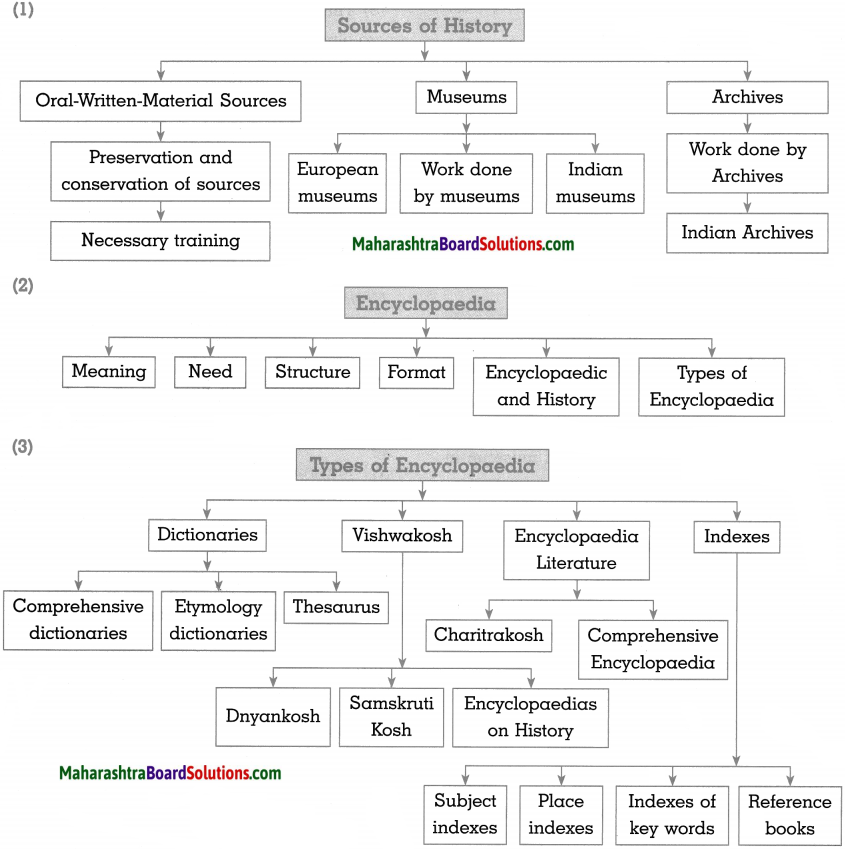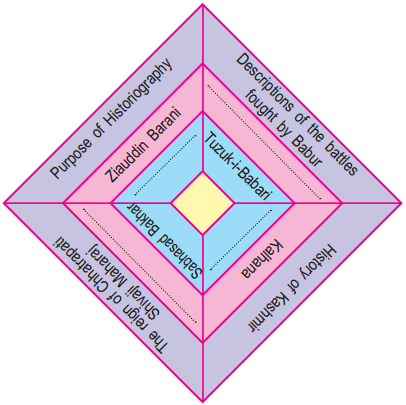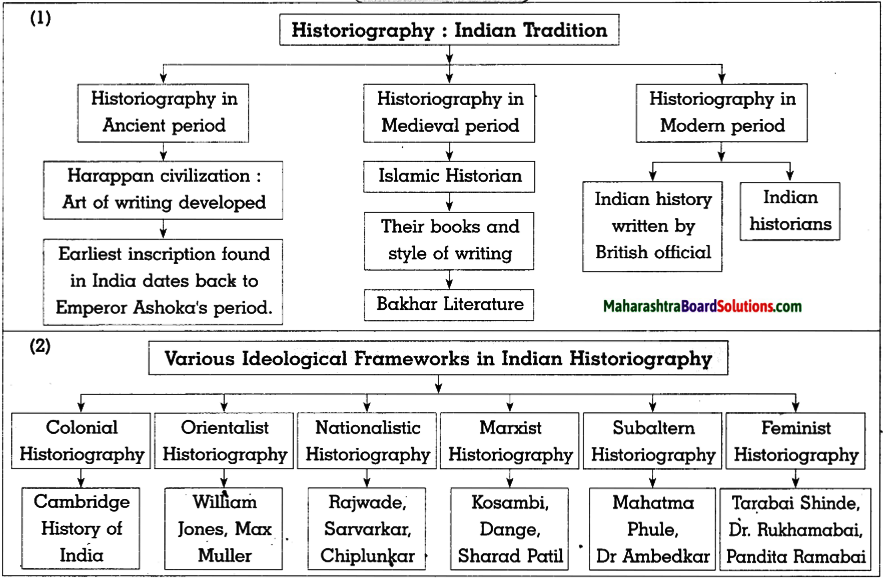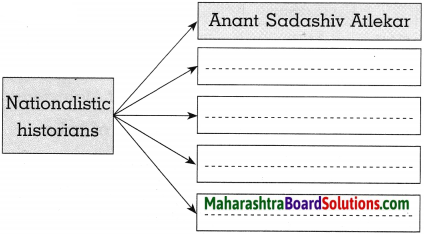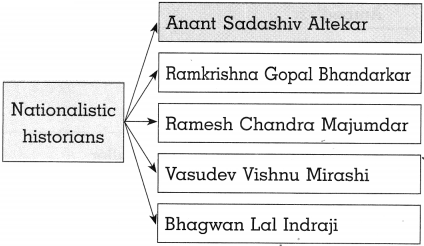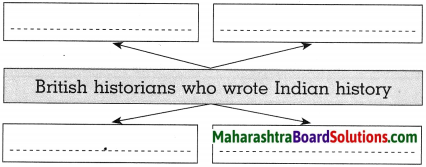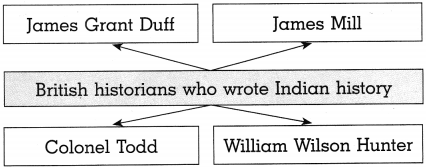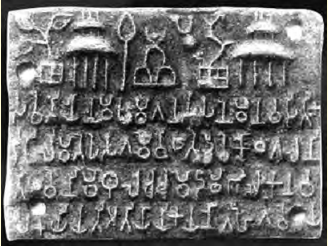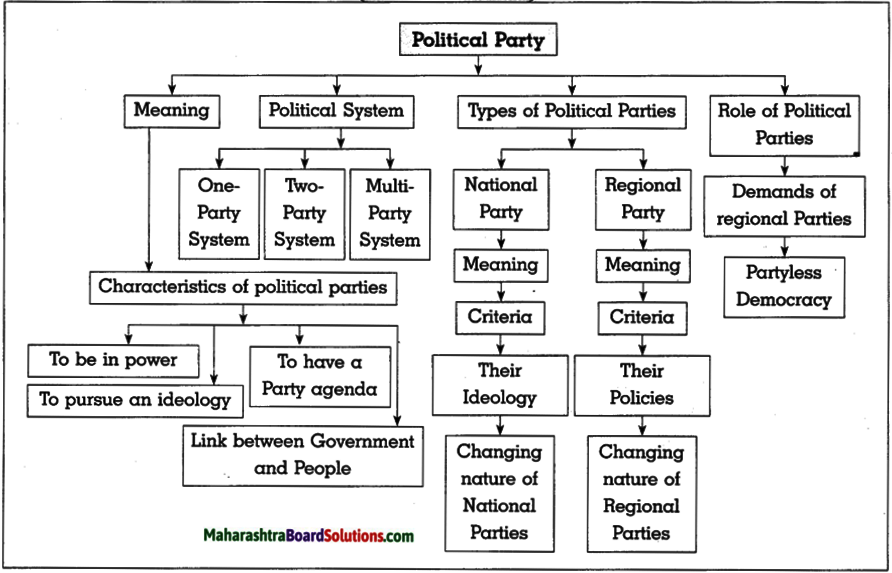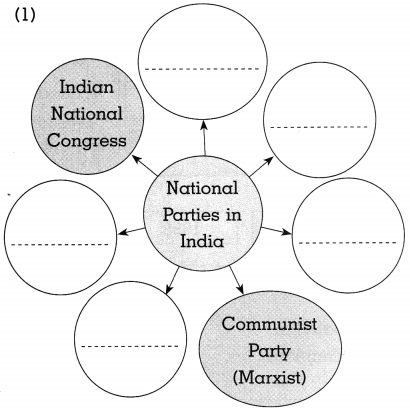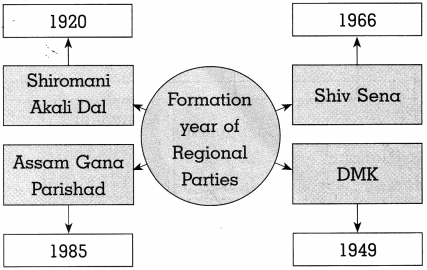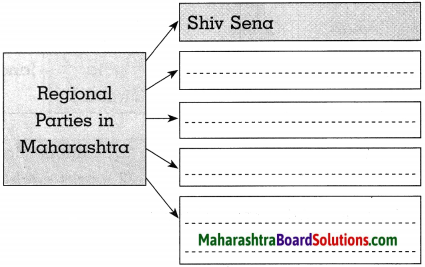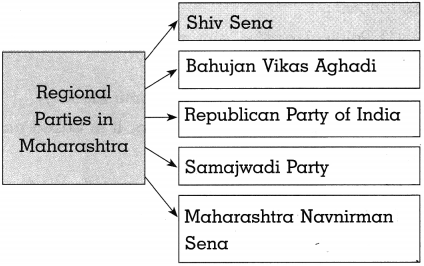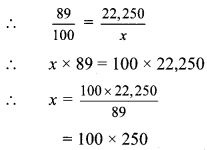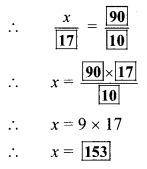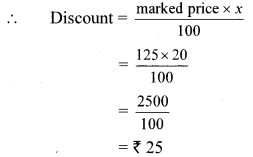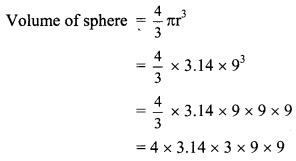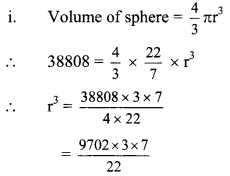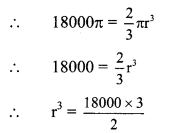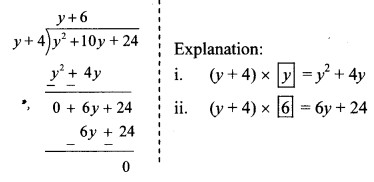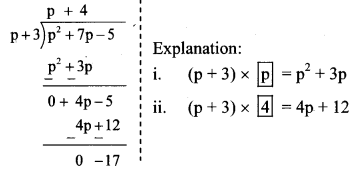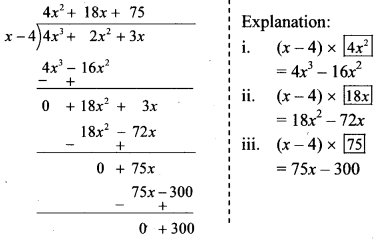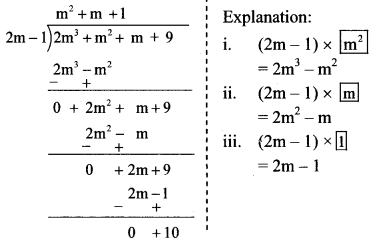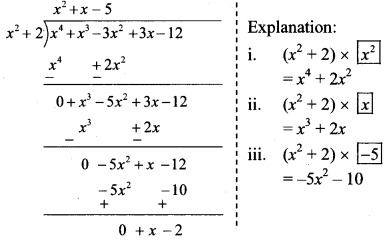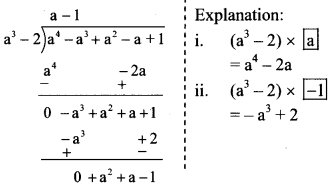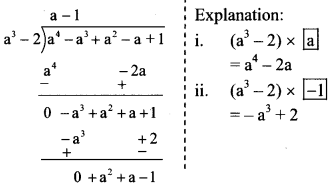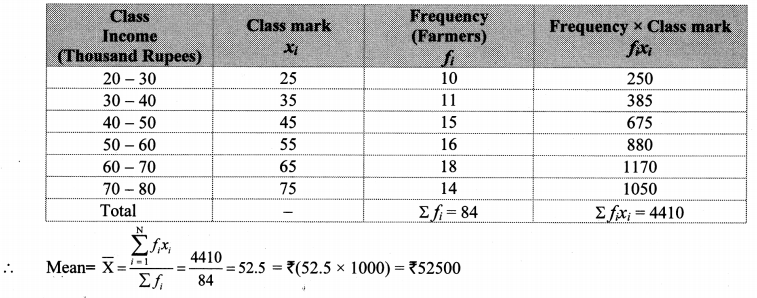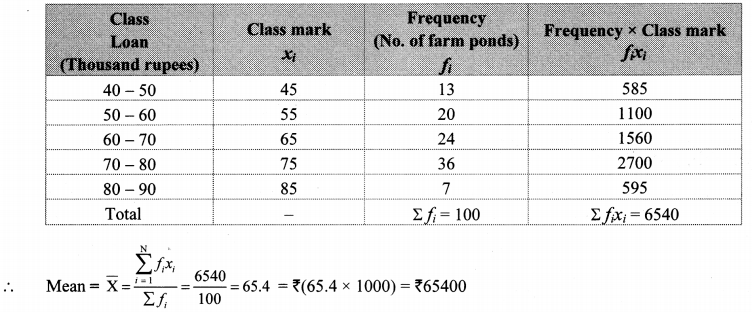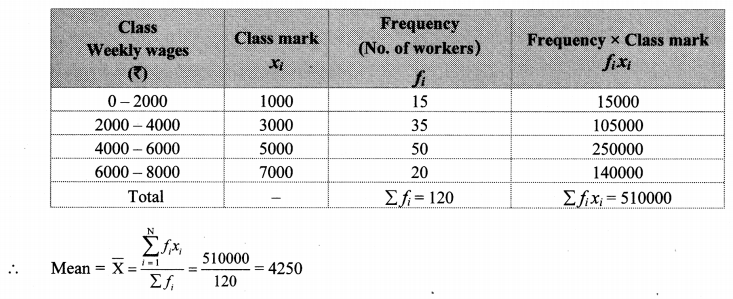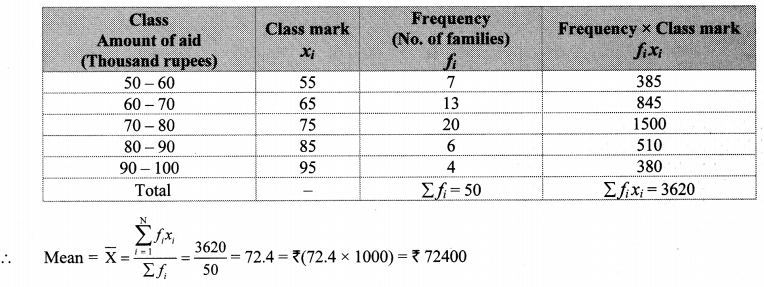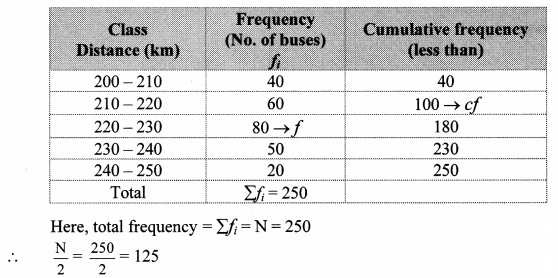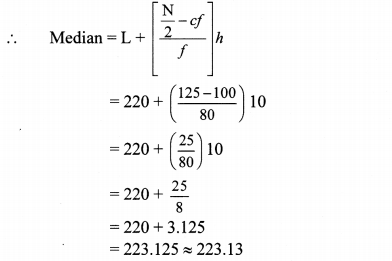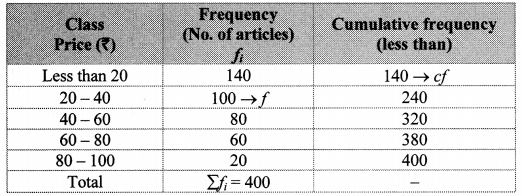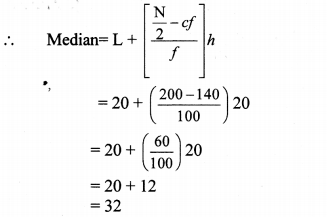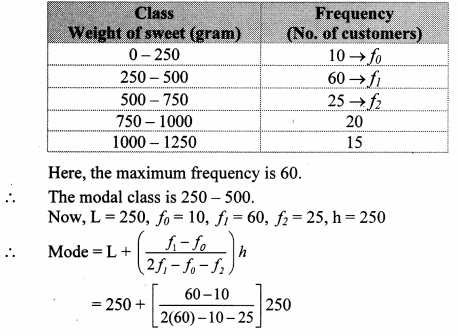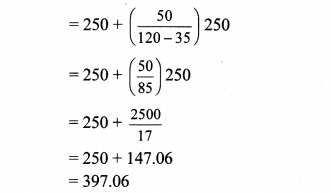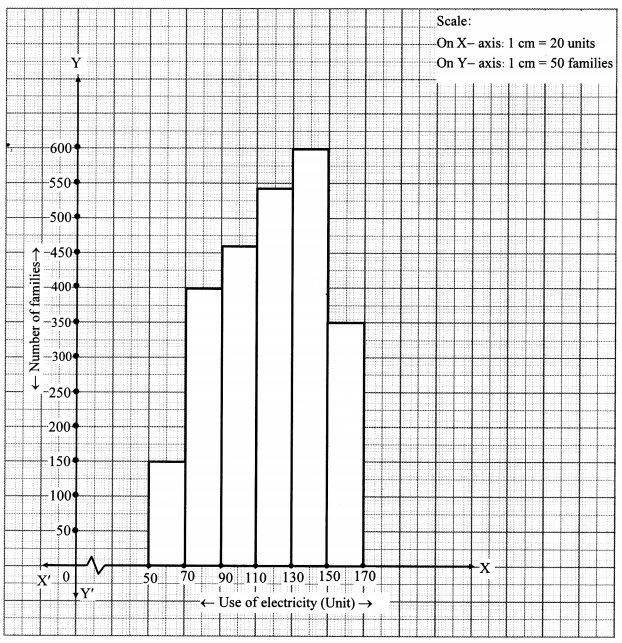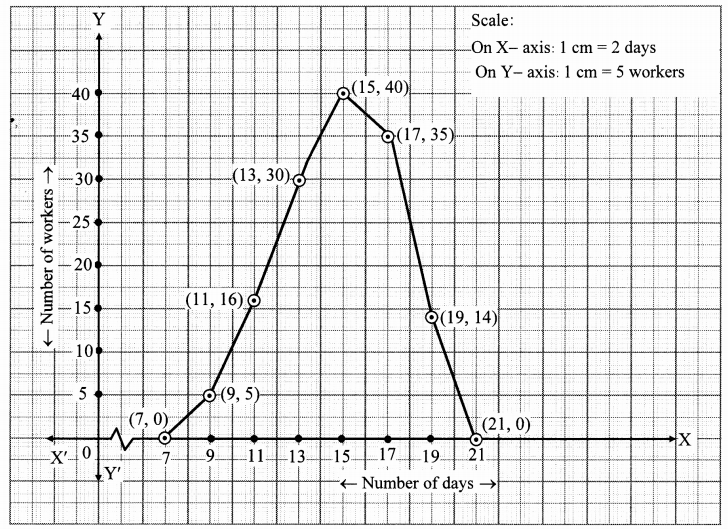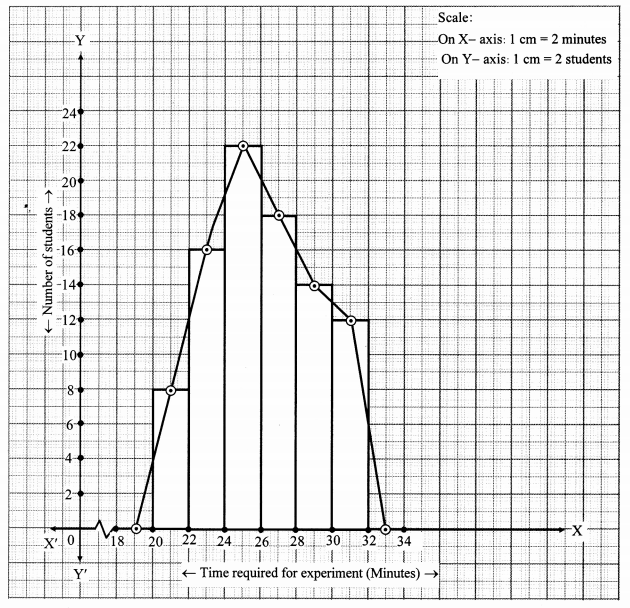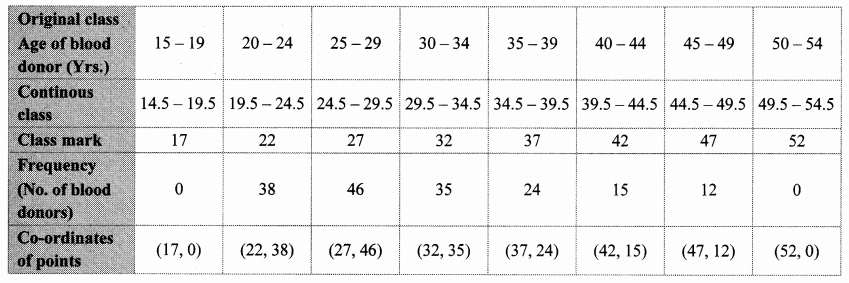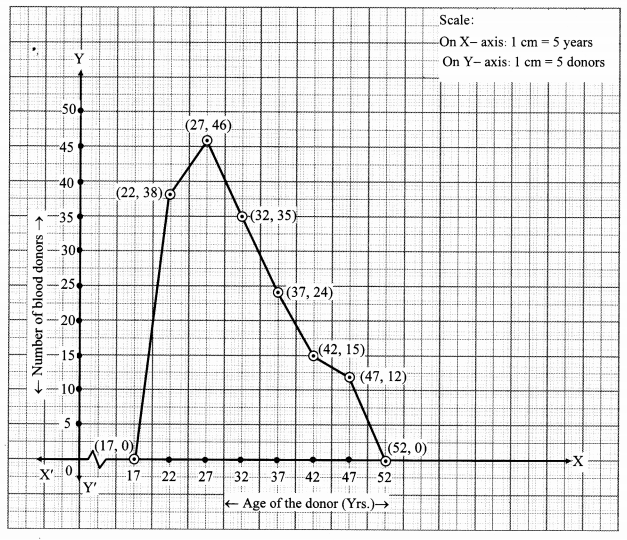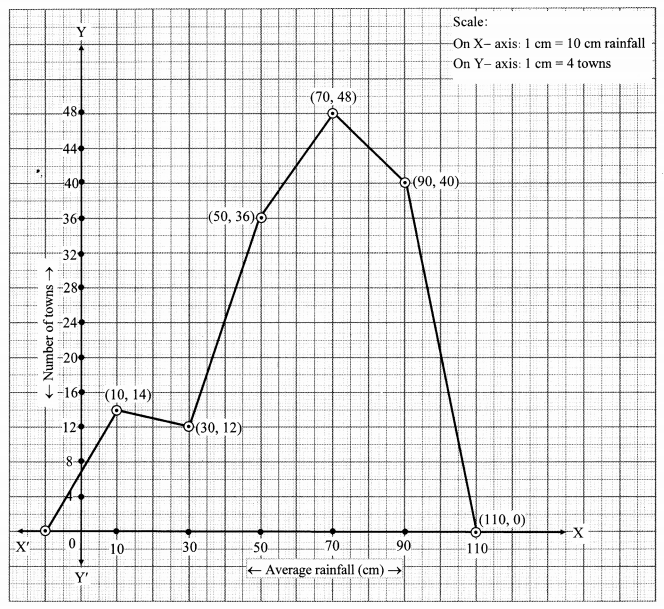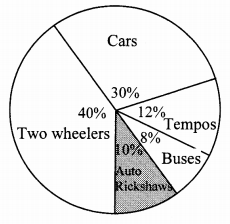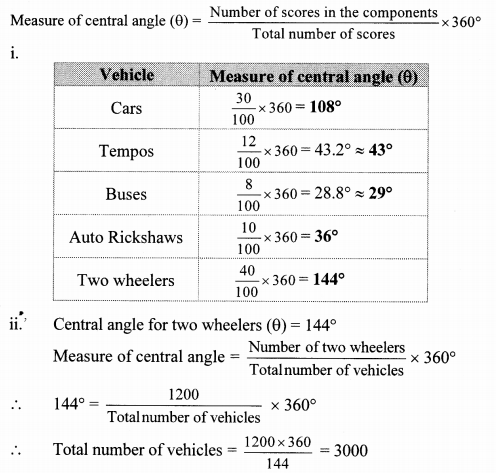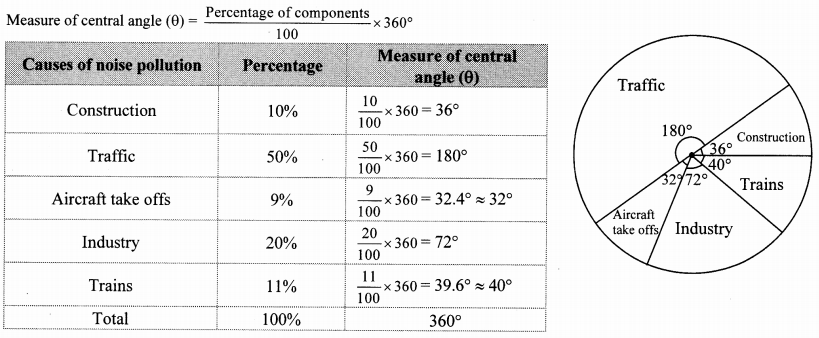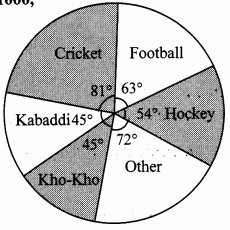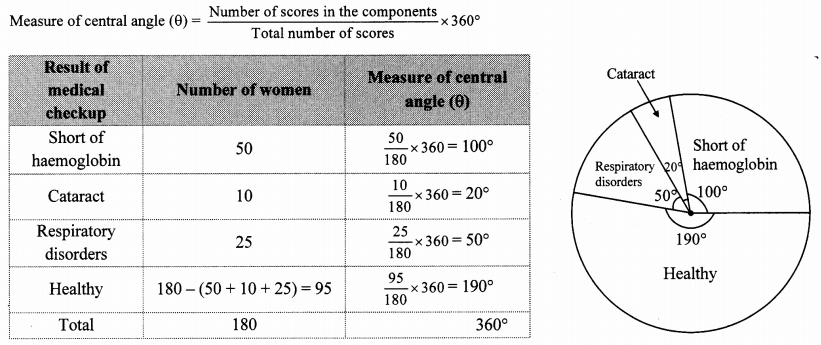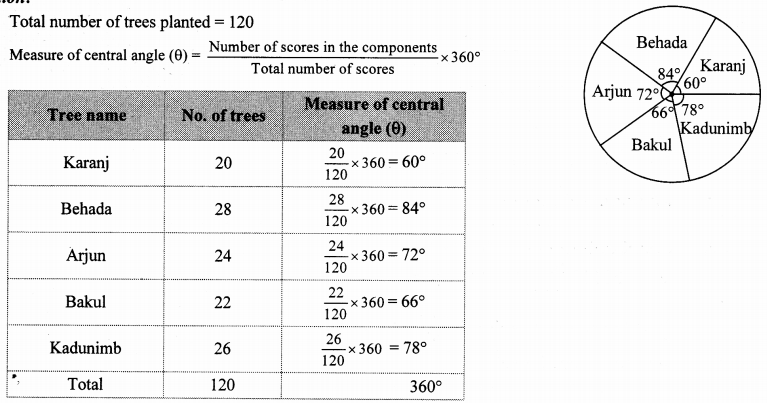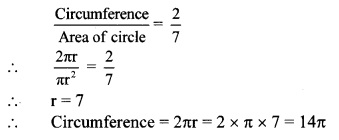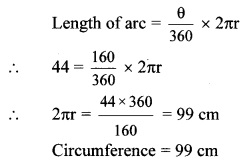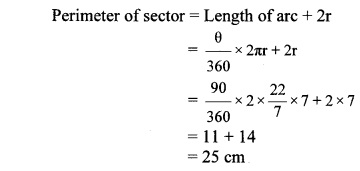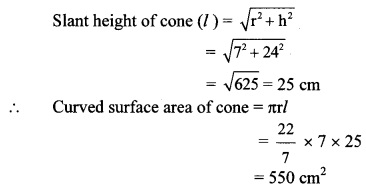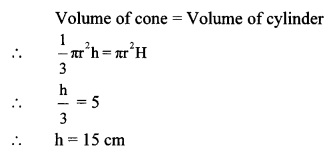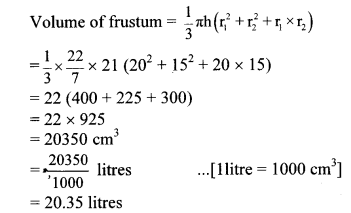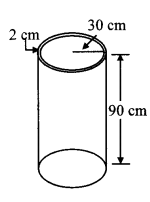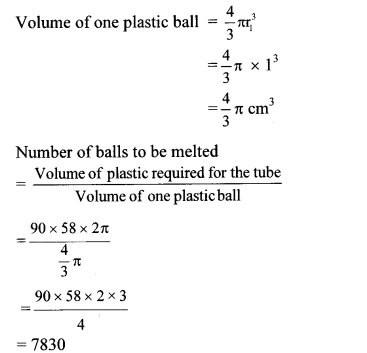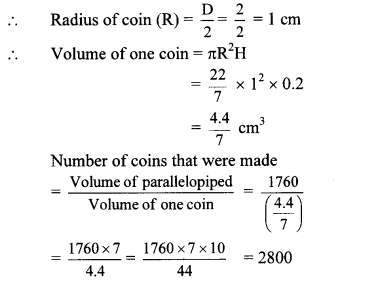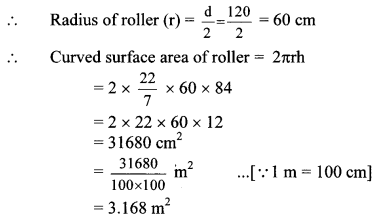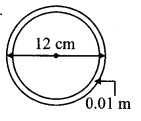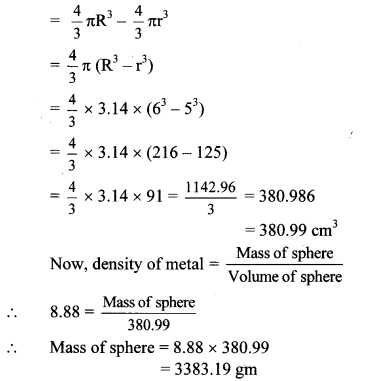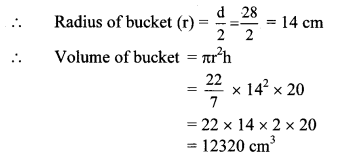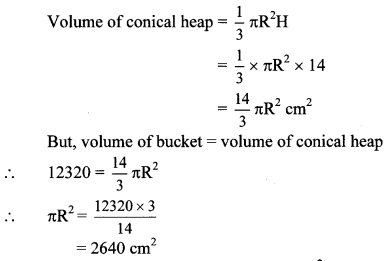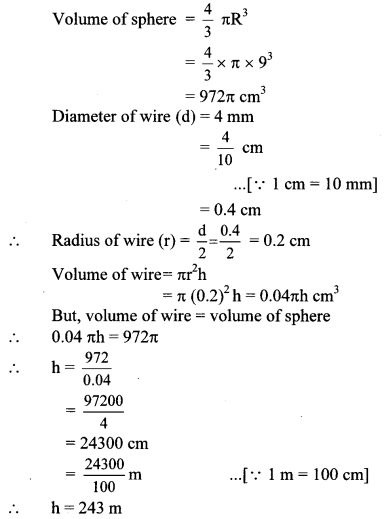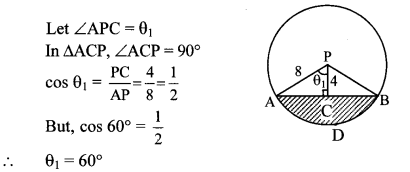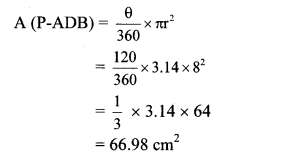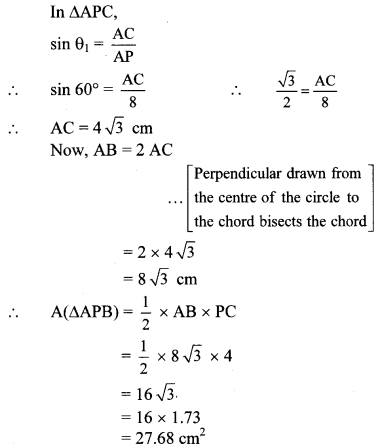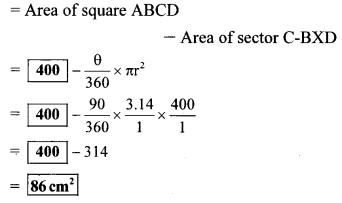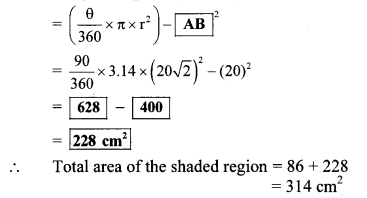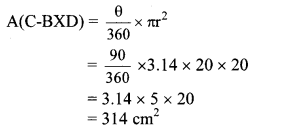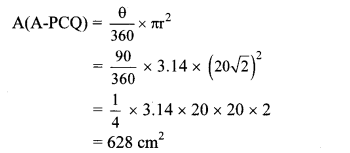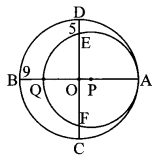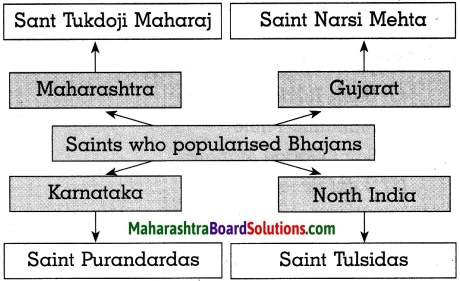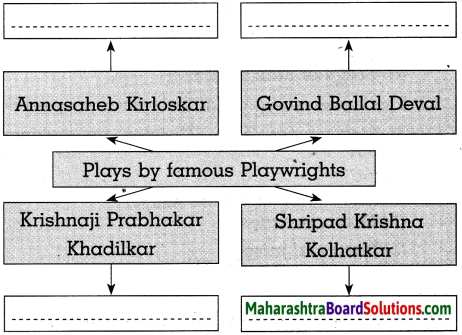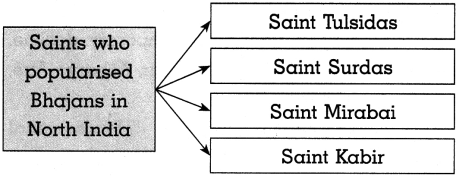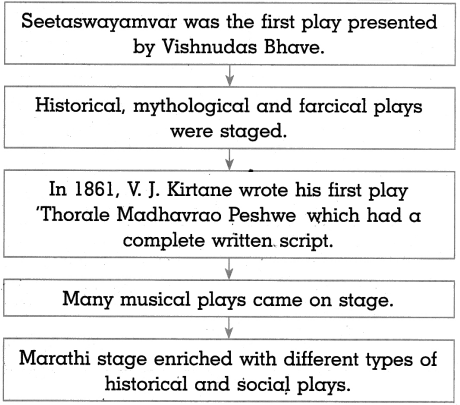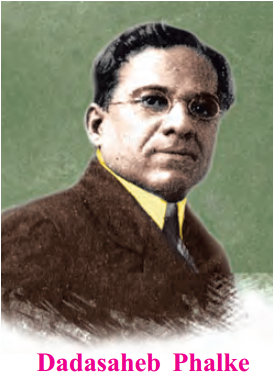Balbharti Maharashtra State Board Class 10 History Solutions Chapter 9 Heritage Management Notes, Textbook Exercise Important Questions and Answers.
Maharashtra State Board Class 10 History Solutions Chapter 9 Heritage Management
Question 1.
(A) Choose the correct option from the given options and complete the statement.
(1) Lovre Museum has in its collection the much-acclaimed painting of …………..…….. by Leonardo da Vinci.
(a) Napoleon
(b) Mona Lisa
(c) Hans Sloan
(d) George II
Answer:
(b) Mona Lisa
![]()
(2) …………..…….. at Kolkata is the first museum in India.
(a) Government Museum
(b) National Museum
(c) Chhatrapati Shivaji Maharaj Vastusangrahalay
(d) Indian Museum
Answer:
(d) Indian Museum
(B) Identify and write the wrong pair in the following set.
(1) Maharaja Sayajirao University – Delhi
(2) Banaras Hindu University – Varanasi
(3) Aligarh Muslim University – Aligarh
(4) Jivaji University – Gwalior
Answer:
(1) Wrong Pair: Maharaja Sayajirao University – Delhi
Question 2.
Explain the following statements with reasons.
(1) Archives and libraries publish research journals, informative pamphlets, leaflets, posters, etc.
Answer:
- Libraries preserve and conserve old’ books and artefacts discovered during excavation.
- If these documents and artefacts are not exhibited then they are kept in archives.
- All the historical sources are our assets and they should reach the people.
- Libraries not only preserve these documents but also carry out research, to know the authenticity.
In order to make the historical events, personalities, and historical research known to the people, archives and libraries publish research journals, informative pamphlets and leaflets.
(2) Only trained persons, who are duly qualified can take up the tasks involved in the work of conservation and preservation.
Answer:
- While conducting historical research, one has to do the different tasks carefully like collecting sources, preserving, exhibiting, etc.
- The skill required for every task is different. The procedure followed for each task is different as well as the preliminary preparations.
- It is essential to know about precautions to be taken.
- Hence only trained persons who are duly qualified can take up the tasks involved in the work of conservation and preservation.
![]()
Question 3.
Write notes:
(1) Sthalakosh
Answer:
- History does not shape itself in oblivion. It takes place at some place.
- Geographic information is essential to study history.
- Chakradhar Swami, of Mahanubav sect, visited many villages and details of those villages were noted by Muni Vyas.
- Siddheshwarshastri Chitrav wrote Prachin Bharatiya Sthalkosh. It gives us information on various places mentioned in Vedic literature, Kautiliya’s Arthashastra, Panini’s Grammar, Ramayana.
- Mahabharata and also in Buddhist Jain Greek, Chinese and Persian literature.
- Sthalakosh gives us information on ancient cities and history of those cities. It serves as an important written source of history.
(2) Vishwakosh
Answer:
- The first Chief Minister of Maharashtra, Shri Yashwantrao Chavan, established the ‘Maharashtra Rajya Sahitya Samskruti Mandal.
- The objective of making Vishwakosh was to develop and enhance Marathi language and literature.
- Tarkteerth Lakshmanshastri Joshi was appointed as the chief editor. 20 volumes of Vishwakosh are published till date.
- Marathi Vishwakosh contains knowledge about all possible subjects which exist in the world. It has important entries about history.
(3) Samdnya Kosh
Answer:
- While studying any subject we come across many new words. If their exact meaning is not understood, it can create a lot of confusion.
- Terms in history like colonialism, imperialism, liberalisation, globalisation, socialism, communism need explanation and clarity. In order to avoid such confusions, this kosh is prepared.
- In Samdnya Kosh, all subject related concepts are collected and explained. Information on what led to the development of concepts is provided.
- Samdnya Kosh is very helpful for research students, teachers of history as well as common people.
(4) Saraswati Mahal Granthalay
Answer:
- The Saraswati Mahal Granthalay was built in 16-17th century in Tanjavur, Tamil Nadu during the reign of Nayak Dynasty.
- In 1675, Maharaj Vyankojiraje Bhosale conquered ‘ Thanjavur and established his independent rule. He and his successors contributed to the expansion of this library. ‘
- Sarfojiraje Bhosale contributed the most in expanding and enriching the library. Because of his contribution, to honour him, the library was renamed as ‘The Thanjavur Maharaj Sarfoji’s Saraswati Mahal Library’.
![]()
Question 4.
Give elaborate answers to the following.
(1) Why is library management important?
Answer:
Library is not just about a collection of books but managing it is equally important.
- Readers can easily get the books they want if the library is properly organised.
- The location of the book should be easily traced. It saves the time and efforts of readers as well as the librarian.
- Preservation and conservation of books is done effectively with proper management. It prolongs life of books and causes less damage.
- If the management is well acquainted, they will have good collection that will make available good quality books to reader.
- Instead of collecting books on one subject there should be variety in the collection so as to cater of different readers who are very selective in their choices.
- Facilities like proper catalogues, indexes, computerised systems and modern facilities are provided by effective management of library.
- If the management is creative it will organise exhibitions, advertise, have seasonal offers for vacations, conduct competitions to increase membership.
(2) Which tasks are important in archives management?
Answer:
The following tasks are important in archives’ management:
- Important documents to be preserved and care should be taken that document with important contents are preserved in their original condition. Confidentiality of important papers should be maintained.
- To classify the documents by preparing indexes and to create accurate systems of retrieval of documents.
- Documents from the archives are supposed to be very reliable.
- Therefore, it is important to safeguard the papers from humidity, fungus and other environmental factors.
- It is important to remain updated with latest technology in archive management.
- Computerise/Digitalse all systems. To make use of information technology in managing libraries and archives.
- To establish regional and local archives*.
- To preserve national, cultural and historical heritage.
- To create a hasslefree system.
Question 5.
Complete the following Concept chart.
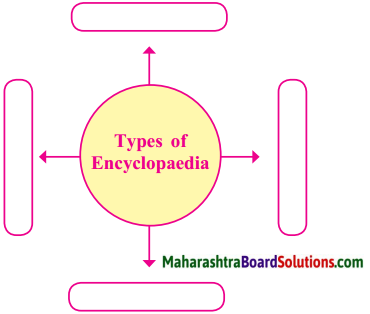
Answer:
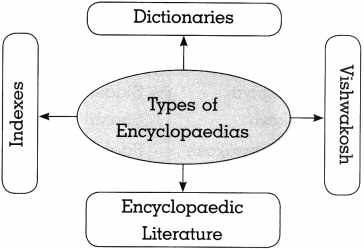
![]()
Project
Obtain information about the important libraries in Maharashtra. Visit the library in your vicinity and learn about its functioning.
Question 6.
Complete the sentences by choosing the correct option:
(a) Documents and artefacts which are not exhibited are kept in …………………… .
(a) Museum
(b) Library
(c) Archives
(d) Government office
Answer:
(c) Archives
(b) ……………………. was the 16th century artist who worked under the patronage of French King Francis I.
(a) Leonardo-da-Vinci
(b) Michaelangelo
(c) Raphael
(d) Dante
Answer:
(a) Leonardo-da-Vinci
(c) The collection in ……………………. increased to a great extent because of the antiquities brought by Napoleon Bonaparte.
(a) National Museum of Natural History
(b) British Museum
(c) Louvre Museum
(d) The Calico Museum
Answer:
(c) Louvre Museum.
(d) ……………………., a natural scientist handed over about 71 thousand objects in his collection to the British Museum.
(a) Sir Hans Sloan
(b) King George II
(c) Napoleon Bonaparte
(d) King Francis I
Answer:
(a) Sir Hans Sloan
(e) The Museum of Natural History which 8 houses more than 12 crore specimens of fossils is in ……………………. .
(a) England
(b) France
(c) Switzerland
(d) USA.
Answer:
(d) USA
(f) Chhatrapati Shivaji Maharaj Vastu-sangrahalay was built to commemorate the visit of ……………………. .
(a) King George I
(b) Queen Elizabeth
(c) Prince Charles
(d) Prince of Wales
Answer:
(c) Prince of Wales
(g) The building of Chhatrapati Shivaji Maharaj Vastusangrahalay is built in ……………………. style.
(a) Mughal
(b) Indo-Greek
(c) Indo-Gothic
(d) Indo-Persian
Answer:
(c) Indo-Gothic
![]()
(h) ……………………. is given status of Grade I heritage building in Mumbai.
(a) Chhatrapati Shivaji Maharaj Railway Terminus
(b) Chhatrapati Shivaji Maharaj Vastusangrahalay
(c) Reserve Bank of India
(d) Jehangir Art Gallery
Answer:
(b) Chhatrapati Shivaji Maharaj Vastusangrahalay.
(i) The Royal Library of Ashurbanipal, the ……………………….. Emperor in Mesopotamia is one of the earliest libraries in the world.
(a) Hispanic
(b) Assyrian
(c) Mongol
(d) Akkadian
Answer:
(b) Assyrian
(j) The ……………………….. in Thanjavur, Tamil Nadu was built in 16th-17th century during the times of Nayak dynasty.
(a) Vyankojiraje Bhosale
(b) Sarfojiraje Bhosale
(c) Saraswati Mahal Granthalay
(d) Vidya Niketan
Answer:
(c) Saraswati Mahal Granthalay
(k) The first official archives of India, the ……………………….. was established in 1891 C.E. in Kolkata.
(a) National Archive
(b) Federal Record of Nation
(c) Archive National
(d) Imperial Record Department
Answer:
(d) Imperial Record Department
(l) There are about five crore Modi documents related to Maratha history in the Pune branch which are referred as ………………………. .
(a) Peshwa Daftar
(b) Bhosale Daftar
(c) British Daftar
(d) Maratha Daftar
Answer:
(a) Peshwa Daftar
(m) ……………………….. prepared during the reign of Chhatrapati Shivaji Maharaj is considered as an important encyclopaedia.
(a) Bharatiya Vyavahar Kosh
(b) Rajavyavaharkosh
(c) Vyavaharik Kosh
(d) Bharatiya Prachin Charitrakosh
Answer:
(b) Rajavyavaharkosh.
![]()
Question 7.
Identify the wrong pair in the following and write it:
(1)
| (1) Maharaj Sayajirao University | Delhi |
| (2) Banaras Hindu University | Varanasi |
| (3) Aligarh Muslim University | Aligarh |
| (4) Jivaji University | Gwalior |
Answer:
Wrong Pair: Maharaj Sayajirao University – Delhi.
(2)
| (1) Sangeetshastrakar va Kalavant Yancha Itiha£ | Lakshman Dattatray Joshi |
| (2) Krantikarakancha Charitrakosh | S. R. Date |
| (3) Svantantryasainik Charitrakosh | N. R. Phatak |
| (4) Bharatvarshiya Prachin Aitihasik Kosh | Shridhar Vyankatesh Ketkar |
Answer:
Wrong Pair: Bharatvarshiya Prachin Aitihasik Kosh – Shridhar Vyankatesh Ketkar
(3)
| (1) Bharatvarshiya Charitrakosh | Siddeshwar Shastri Chitral |
| (2) Marathi Vishwakosh | Raghunath Bhaskar Godbole |
| (3) Bharatiya Samskruti Kosh | Pandit Mahadevshastri Joshi |
| (4) Maharashtriya Dnyankosh | Shridhar Vyankatesh Ketkar |
Answer:
Wrong Pair: Marathi Vishwakosh – Raghunath Bhaskar Godbole
(4)
| (1) Sthanapothi | Muni Vyas |
| (2) Index of Marathi Periodicals | S. G. Date |
| (3) First Encyclopaedia of Natural History | Denis Diderot |
| (4) Asiatic Society of Bengal | First museum in India |
Answer:
Wrong Pair: First Encyclopaedia of Natural History – Denis Diderot
![]()
Question 8.
Complete the following concept chart:
(1)
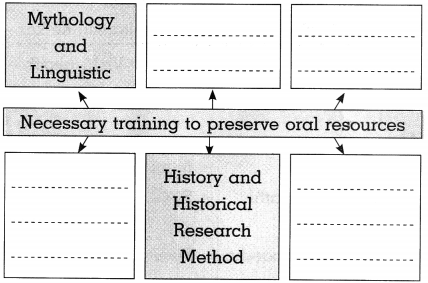
Answer:
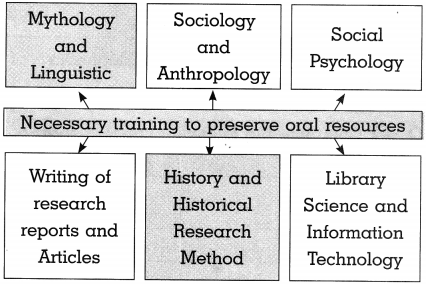
(2)
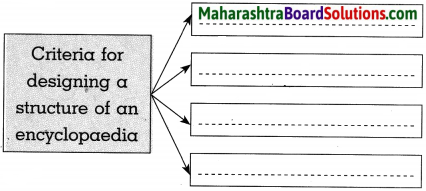
Answer:
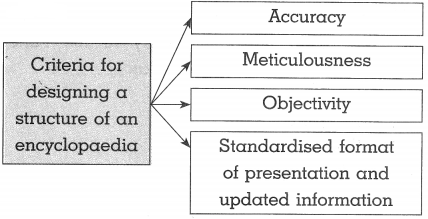
(3)
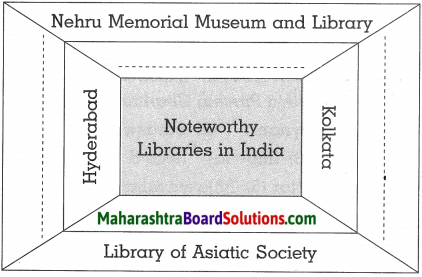
Answer:
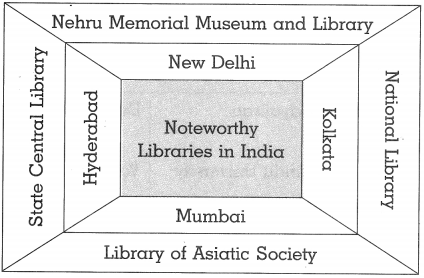
![]()
Question 9.
Explain the concept :
(a) Archives:
Answer:
- An archive is a place where documents with important content in their original conditions are preserved in a scientific manner.
- Artefacts and documents which are not exhibited in museums or libraries but have historical importance are kept in archives.
- Archives provide documents to the § government, research students and local public when required. Technically, the management of archives is akin to library management.
- The documents in the archives are preserved in their original condition and hence no changes can be made to it. Documents from archives are very reliable.
(b) Encyclopaedia:
Answer:
- Encyclopaedia can be defined as a systematic compilation of words with meaning, information or knowledge on various topics.
- A specific method is adopted to compile the information or to organise the available knowledge. g
- Accuracy, meticulousness, objectivity, standardised format of presentation and updated information are the special features of good encyclopaedia.
- The objective of making an encyclopaedia is to make the available knowledge easily accessible to the readers.
(c) Dictionaries:
Answer:
- A type of encyclopaedia giving word meaning arranged in alphabetical order is a Dictionary.
- Dictionaries help the readers to know meaning of the words and enrich their vocabulary.
- Dictionaries have word meanings, synonyms and etymology.
- Dictionaries are of various type like comprehensive dictionaries, dictionaries of terminology, etymology, thesaurus and dictionaries of idioms and proverbs.
(d) Comprehensive Encyclopaedia (Vishwakosh):
Answer:
- Comprehensive Encyclopaedia (Vishwakosh) means a book which has information on all subjects known, i.e. all subjects under the sun.
- Vishwakosh is an important medium” of documenting and disseminating information.
- The information is included in encyclopaedia after thorough research and study.
- (a) There are two types of encydopaedias – one that includes all subjects like ‘Encyclopaedia Britannica’, Maharashtriya Dnyankosh, Marathi Vishvakosh.
(b) The other type of encyclopaedia includes comprehensive information on one chosen subject, e.g. Bharatiya Samskruti Kosh, ‘Vyayam Dnyankosh1.
(e) Index:
Answer:
- Index means a list.
- Index is at the end of a book which includes alphabetical lists of individuals, subjects, key words, reference books, etc.
- As the list is in alphabetical order, the reader finds it easy to access required information.
- The index of Marathi periodicals prepared by S. G. Date and index of ‘Marathyancha Itihasachi Sadhane1 is well-known.
![]()
(f) Charitrakosh (Encyclopaedia of Biographies):
Answer:
- Charitrakosh contained biographies of individuals who lived in a particular period and their work which inspired and motivated all the people in the society.
- Charitrakosh enables the researcher and scholars to know about the historic period, with regard to social structure and social life.
- Bharatvarshiya Prachin Aitihasik Kosh written by Raghunath Bhaskar Godbole is the earliest encyclopaedia of this kind.
(g) Bharatiya Samskruti Kosh:
Answer:
- It contains the description of Indian history, geography, religions, sects, culture, traditions, beliefs, ethnic and lingual groups residing in our country.
- Bharatiya Samskruti Kosh throws light on, people living in a particular region, festivals and their culture.
- Mahadevshastri Joshi edited and published 10 volumes of this Kosh.
- Chakradhar Swami, of Mahanubav sect, visited many villages and details of those villages were noted by Muni Vyas.
Question 10.
Write short notes:
(a) Louvre Museum:
Answer:
- The Louvre Museum in Paris was established in the 18th century.
- It has antiquities collected by the royal family of France.
- The world famous painting of Mona Lisa by Leonardo-Da-Vinci is kept in this museum.
- The antiquities brought back by Napoleon Bonaparte on his return from conquests are exhibited in this museum.
- Presently, the museum has more than 3 lakh and 80 thousand artefacts.
(b) British Museum:
Answer:
- The British Museum was established in the 18th century in London.
- It has a collection of 71 thousand objects given by natural scientist Sir Hans Sloan to King George. II.
- Several books, pictures, specimens of preserved plants are included in it.
- The ancient objects and artefacts which the Britishers have collected from their colonies are exhibited in this museum.
- At present, it has about 80 lakh objects in its collection.
(c) National Museum of Natural History:
Answer:
- The National Museum of Natural History was established in Washington DC in 1846.
- The Smithsonian Institute managed the museum from its inception. This is a museum of natural history.
- Remains of animals, plants, organisms and thousands of specimens of fossils are kept in it.
- It also has human fossils, minerals, rocks, shells, artefacts. All together it has a collection of more than 12 crore (120 million).
(d) Chhatrapati Shivaji Maharaj Vastusangrahalay:
Answer:
- Chhatrapati Shivaji Maharaj Vastusangrahalay was built to commemorate the visit of Prince of Wales to India. Some influential residents in Mumbai decided to establish a museum in 1904.
- The foundation of the building was laid on 2nd November 1905 and the construction was completed in 1922. The museum was named as ‘Prince of Wales of Western India’. In 1998 C.E. it was renamed as ‘Chhatrapati Shivaji Maharaj Vastusangrahalay.’
- The museum building is constructed in Indo-Gothic style and has been awarded the status of Grade I heritage building.
- The museum has about 50 thousand antiquities which are divided into three categories, viz.. Arts, Archaeology and Natural History.
![]()
(e) Bharatvarshiya Prachin Aitihasik Kosh:
Answer:
- Raghunath Bhaskar Godbole wrote Bharatvarshiya Prachin Aitihasik Kosh.
- It is the first dictionary of Biography in Indian regional language.
- We get information on Manu and many ancient personalities from Mahabharat.
- We come to know about legendary people who lived in Bharatvarsha and were renowned.
- Information about their women, their sons, religions, lands, capitals, mountains and rivers.
- Which flowed in their land their entire history is given in this encyclopaedia.
(f) Bharatiya Samskruti Kosh:
Answer:
- Pandit Mahadevshastri Joshi edited and published 10 volumes of Bharatiya Samskruti Kosh.
- He wrote about Indian history, geography, about people speaking different languages and how they created history.
- Detailed information on culture of India and festivals, geography, traditions, ideas, is taken into consideration.
Therefore these koshs are useful for readers and research scholars.
Question 11.
Explain the following statements with reasons:
(a) Encyclopaedias should be created in as many languages as possible.
Answer:
Encyclopaedias symbolise the richness and vast gamut of words a language has.
- It fulfils the curiosity of readers and solves the confusion of a layman.
- Encyclopaedias inspire to carry out more research as one gets information, knowledge and references.
- Encyclopaedias provide complete information and knowledge to researchers and students which enriches their previous knowledge.
- Encyclopaedias represent intellectual and cultural development of a society.
- Many languages in India and the world are rich and resourceful and hence encyclopaedias should be created in as many languages as possible to raise intellectual level of society.
(b) Encyclopaedia and history are related.
Answer:
- Encyclopaedias contain information about personalities, events and ancient cultures.
- In order to gather information it is essential to take the help of history,
- The common factors between an encyclopaedia and history are objectivity and authenticity.
- Research scholars of history need to refer to encyclopaedias to find information on events, personalities, concept, places, etc. as encyclopaedias are created with the help of history. Hence encyclopaedia and history are related.
(c) Improved versions of Encyclopaedia or supplements to original editions need to be published.
Answer:
- Encyclopaedia is a systematic compilation of information or knowledge on various topics ranging from people, places and events to concepts, word meanings, etc.
- With the passage of time the spectrum of knowledge has widened.
- With the advent of new technology new words are added. Latest or updated information, knowledge, concepts enrich the language.
- The references of the past events change in context of the new research. If all these changes are not incorporated in the encyclopaedias, they will become outdated.
Therefore, encyclopaedia or supplements to original editions need to be published.
Question 12.
Answer the following questions in 25-30 words:
(a) What are the ways to preserve and conserve oral resources?
Answer:
- Folk songs ancl folk tales are collected and compiled.
- Collected material is classified. It is interpreted and analysed after compilation.
- The result of research conducted is then published.
![]()
(b) What steps are taken to preserve written sources?
Answer:
Written sources have great importance in the writing of history. To preserve written sources we need –
- To collect old books, historical books, pictures, photographs, copper plates, manuscripts and official records and edit them.
- To decide upon the historical values of collected documents.
- To exhibit the selected documents.
- To publish edited documents and research reports.
- To complete necessary chemical and mechanical process of cleaning for conserving and preserving the documents.
(c) What methods should be followed while studying material source?
Answer:
The following methods should be followed by research scholars while studying material source:
- To collect the artefacts and classify them according to their historical date and type and prepare indexes.
- To arrange exhibitions of selected artefacts or their replicas.
- To write and publish research articles about artefacts.
- To complete required mechanical and chemical processes of cleaning for conservation and preservation of the collected documents.
(d) Write about the earliest libraries in the world.
Answer:
Libraries were established in different parts of the world in ancient times:
- The Royal Library of Ashurbanipal is the earliest library dating back to the 7th century B.C.E. in Mesopotamia. The library was owned by the Assyrian emperor.
- A library was discovered at Alexandria in Egypt which was built in 4th century C.E.
- The library at Takshashila university in 5th century B.C.E. – 5th century C.E. as it was a noted centre of learning.
(e) Write about format of Encyclopaedias.
Answer:
Format of Encyclopaedias:
- Encyclopaedias are made according to selected subjects; therefore encyclopaedias are classified according to the subjects.
- Encyclopaedias are framed according to alphabetical order or as per the order of topics.
- They provide the exact meaning of words and give information on concepts.
- The type of order is kept according to the convenience of the readers. An index is provided at the end of the encyclopaedia for this purpose.
(f) Write about Encyclopaedic Literature.
Answer:
- It appears similar to an encyclopaedia but differs in composition.
- Information and scholarly articles on all possible aspects of a subject is covered.
- Experts are called to write on different topics which are compiled to create encyclopaedia
- ‘Maharashtra Jeevan’ Volume I and II; ‘Shahar Pune’ Volume I and II; Yearbook like Manorama, etc. are the examples of Encyclpaedic Literature.
![]()
(g) Give information on early encyclopaedias made in the west.
Answer:
- The process of making encyclopaedias started in before 1st century C.E. in the west. Pliny wrote the first encyclopaedia on natural history between 23 C.E.-79 C.E.
- In the 8th and 9th century, encyclopaedias were written in England, France and in Arab countries.
- French Philosopher Denis Diderot wrote Encyclopaedia in the 18th century C.E.
- The important milestone in this process was ‘Encyclopaedia Britannica’ published in 1767 C.E.
- Wikipedia is considered equivalent to encyclopaedia. The information given in this encyclopaedia is highly reliable and updated.
(h) Write about ancient Indian encyclopaedias.
Answer:
- In the 7th century C.E., Nighantu, a dictionary (information on ancient medicine) in Sanskrit language was written. Dictionaries like Dhatupath were written.
- In tjie medieval times, encyclopaedic text was composed by Mahanubhav sect.
- Amarsimha wrote a thesaurus in Sanskrit ‘Amarkosha’.
- Raghunath Pandit prepared Rajavyavaharkosh as directed by Chhatrapati Shivaji Maharaj.
Question 13.
Read the following passage and answer the following questions:
(a) Which factors influence Encyclopaedia?
Answer:
The influence of national policies, ethical values and ideals, philosophy and traditions is seen in an encyclopaedia.
(b) What is the common factor between history and encyclopaedia?
Answer:
History and encyclopaedia both are objective.
(c) Explain the statement: Encyclopaedias are looked upon as outstanding achievements of a society.
Answer:
- The knowledge in all the spheres of society is made accessible to everyone is the major reason behind making an encyclopaedia.
- What inspires people to create encyclopaedias is the instinct to gain knowledge and spread it.
- Encyclopaedias reflect the collective intellect and creativity of society.
- One develops a sense of pride after knowing about nation’s progress through it.
Hence encyclopaedias are looked upon as outstanding achievements of a society.
Question 14.
Give elaborate answers to the following: (3 marks each)
(a) What kind of training is required to study written sources?
Answer:
While studying and handling written sources the following training is required:
- The students should have knowledge of scripts like Brahmi, Modi, Persian and their development.
- They should know ways to obtain information about the social organisations and traditions.
- They should know about the literature and writing style in past societies.
- They should have basic knowledge about administrative systems, dynasties and cultures of the past.
- They should study prevalent schools of painting and sculpture.
- They should be able to collect information on types of paper, know about ink and colour of ancient document and ways to handle.
- They should be well acquainted with properties of stones and metals used for inscriptions.
- Articles published earlier on case study should be read.
- They should know the chemicals and equipment used in various processes of cleaning and preserving the documents.
- Modern know-how of approaches of managing exhibitions in museums, galleries and information technology.
![]()
(b) What kind of training is required to study material sources?
Answer:
Student should have following knowledge to study material resource:
- They should have basic knowledge of archaeological method and theory.
- They should be acquainted with the history of ancient civilisations.
- They should have knowledge of various techniques of excavation.
- Stones, minerals and clay used to make artefacts and their characteristics to be studied.
- They should be well-acquainted with the sources of the material used and their chemical properties.
- They should also know about various styles of making artefacts and development in their making process.
- They should have the knowledge and skills of making replicas of artefacts and fossils.
- They should read research papers previously published on his case study.
- They should acquire information about the approaches of arranging exhibitions and administrations.
- They should know about the equipment and chemicals necessary for the cleaning of artefacts.
- They should be able to write research reports and articles.
(c) Write information about museums in India.
Answer:
- ‘Indian Museum’ established by the Asiatic Society of Bengal in Kolkata was the first museum in India in 1814.
- The ‘Government Museum’ established in Chennai in 1851 C.E. was the second museum in India. The National Museum was established in Delhi in 1949.
- The foundation of the Prince of Wales Museum was laid in Mumbai in 1905. Its construction was completed in 1922. It was renamed as Chhatrapati Shivaji Maharaj Vastusangrahalay in 1998 C.E.
- At present, there are many museums in various states of India.
- Many museums are connected to libraries and archives. Some are connected to Universities.
- Such museums offer courses in Museology also.
(d) Give information on “National Archives of India.
Answer:
- The first official archive of India was established m Kolkata in 1891 C.E. as the ‘Imperial Record Department’.
- It was moved to Delhi in 1911 C.E.
- In 1998 C.E. it was made accessible to the public by the then President of India K.R. Narayanan.
- It was renamed as ‘National Archive’ (National Archive of India). Archives come under the Ministry of Culture of the Indian Government.
- This archive has papers, maps, books and micro films preserved in chronological order since 1748.
- Records in English, Arabic, Hindi, Persian, Sanskrit, Devanagari and Modi languages are preserved.
- Papers kept in archives are classified into public, oriental, manuscripts and private papers.
- The National Archives of India is the largest in Asia and technologically advanced.
(e) Explain the statement: A nation should have museums and libraries.
Answer:
Museums and libraries mirror the history of the country and that is the reason they are very valuable for a nation.
- Museums and Libraries make it easy for the research scholar to write history.
- Historical events and life stories of important people reach the masses.
- People get an idea about past social, political and cultural conditions.
- A visit to museums increases one’s interest.
- A change in a prejudiced view about history is seen.
- Information on animals, microorganisms, birds and elements of nature.
- Museums contribute to the process of gaining and dissemination of knowledge.
- Ancient historical sources are preserved.
- Tourism is promoted.
- It creates opportunities for employment.
![]()
Hence it can be said that it is important for a nation to have museums and libraries as they both are symbols of nation’s progress and glory.
Memory Map
